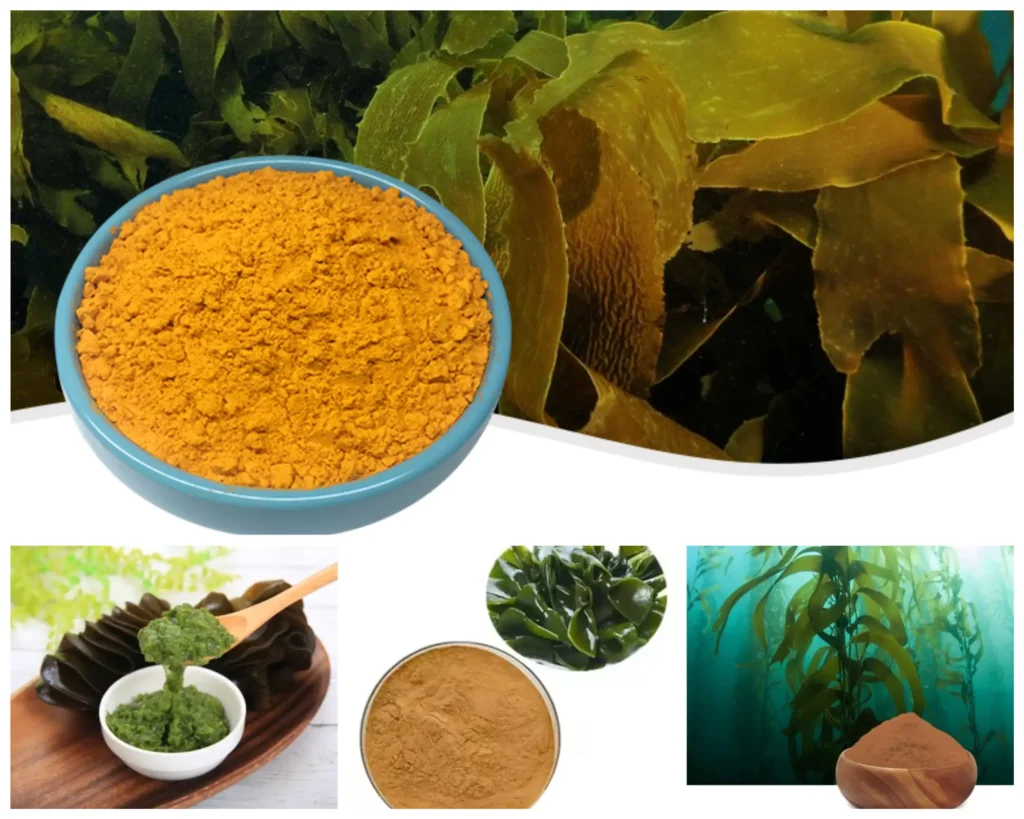Abstract
(1)Effects of Fucoxanthin
- Antioxidant
- Anti-aging
(2)Fucoxanthin supplement dosage form
- Capsule
- Tablet
- Powder
(3)Extraction method
Fucoxanthin is mainly extracted from large brown algae (such as kelp, wakame, etc.). Due to the high content of brown algae polysaccharides, the traditional extraction efficiency is low. At present, new technologies have greatly improved the extraction efficiency and purity by using a specific red and blue mixed light to optimize the growth of algae and the production of fucoxanthin. The use of artificial light sources can overcome the limitations of natural light and significantly reduce production costs.


Article Content
1. Antioxidant effect of Fucoxanthin
Fucoxanthin can exert antioxidant function by quenching singlet oxygen, scavenging free radicals, and scavenging reactive oxygen species. The antioxidant activity of fucoxanthin is related to the allene structure, epoxy group, and hydroxyl group. The allene structure is rare in other pigments. Compared with other pigments, fucoxanthin and its metabolite fucoxanthinol have stronger antioxidant capacity, which can reduce the damage of free radicals to biological macromolecules and cells in the body, and effectively prevent chronic diseases and atherosclerosis.
2. Market prospects and product applications
Fucoxanthin is mainly derived from marine brown algae plants, such as kelp and wakame. This ingredient is commonly consumed in traditional diets in Japan and East Asia.
As an ingredient. Fucoxanthin is suitable for supplement forms such as capsules, tablets, and powders. Due to their antioxidant and fat metabolism-supporting effects, these dosage forms can flexibly meet the needs of different consumers.
At present, fucoxanthin supplements are popular in countries such as Japan, South Korea and the United States. The market prospects of fucoxanthin are broad, especially in the field of weight loss and antioxidant supplements. It has attracted attention for its ability to promote fat burning and weight loss. According to a report by market research company Reports and Data, the global fucoxanthin market is expected to grow significantly in the next few years, especially in the functional food and nutritional supplement markets.
3. Production technology
Currently, fucoxanthin is mainly extracted from large brown algae such as kelp and wakame. Large brown algae have a long growth cycle and are restricted by seasons, and the content is generally between 0.1 and 1 mg·g-1. Due to the high content of large brown algae polysaccharides, the extraction efficiency of fucoxanthin is low and the purity of the product is low. Therefore, the current price of fucoxanthin algae oil from brown algae is high and the content is low, and the supply capacity of pure products is difficult to meet market demand.
4. Technical content
The primary purpose of our technology is to overcome the shortcomings and deficiencies of existing technologies and provide a method to increase the yield of fucoxanthin in diatoms. The diatom powder (especially triangular brown finger algae) obtained by this method has high dry weight, high fucoxanthin yield and yield, and the artificial light source overcomes the day and night alternation of natural light and is easy to control, reducing the production cost. The method is low in cost, and the prepared water-soluble fucoxanthin particles are highly safe and can be widely used in food systems.
This technology inoculates diatoms into the culture medium and cultivates them to the logarithmic growth phase under the illumination conditions of culture light, wherein the culture light is a mixed red and blue light, and the ratio of red light to blue light is 100-0:0-100. The diatom cells obtained in the logarithmic growth phase are cultured under the illumination conditions of induced light (changing the ratio of LED red and blue light) and nitrogen source is supplemented in the culture medium to increase the fucoxanthin yield. Among them, the induced light is the light quality obtained by adding pure blue light (monochromatic light) on the basis of the culture light, and the light intensity ratio of the culture light to the pure blue light is 1-4:1-2. That is, under mixed culture conditions, a two-step method was used to promote cell growth and fucoxanthin production respectively using different proportions of LED red and blue light. That is, red and blue combined light was first used to promote cell growth, and when the triangular brown finger algae cells grew to the logarithmic growth phase, the spectral ratio of LED red and blue combined light was changed and nitrogen source was supplemented to increase the production of fucoxanthin. The fucoxanthin production was significantly increased by 27.86% compared with continuous white light culture, and significantly increased by 31.90% compared with the red and blue light one-step method (culture without changing the red and blue light ratio). The fucoxanthin yield reached 7.02 mg·L-1·d-1, which is the highest value known to date.


